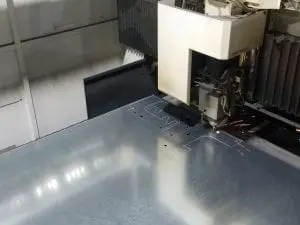Situation
Having grown from a small, developing business to a Tier 1 supplier for the electrical industry, Monti Inc. has learned a thing or two about sustainability over the course of nearly 50 years.
Today the company is a supplier to such original equipment manufacturers Siemens, Schneider Electric™, and Eaton and operates plants in Ohio, South Carolina, and Michigan. From one-off prototype and repair jobs to high-volume production, Monti makes electrical parts that range in size from those that fit in a person’s palm to 5 by 10 ft., using materials including copper and aluminum; stainless, galvanized, and hot- and cold-rolled steels; and insulation and plastics.

Long-term sustainability entails everything from lasting customer and employee relationships to ongoing process improvement. “We’re always looking to make our quality better, improve our safety, and improve our processes to become more efficient and more adaptable,” said Plant Manager Nick LaVigne, based in the Greenwood, S.C., plant. “We’re continuously looking for new technology, and year over year we spend a large percentage of our profits on new equipment.”
It was this dedication to sustainability that compelled the company to take a closer look at its computer-aided manufacturing (CAM) system. “We knew that we needed higher efficiencies and that our old software was very slow and cumbersome,” LaVigne explained.
Resolution
Monti replaced the CAM system with Vero Software’s Radan system for sheet metal. The software can program all the materials the company uses on its laser, and it can program and create nests quickly—something the company really needed, according to LaVigne.
At the time of the purchase, Monti was running four CNC lasers at two of its plants. Today it operates three lasers at its Cincinnati and Greenwood plants and performs some lights-out laser cutting at the Cincinnati location.
Overall programming time has been cut nearly 60 percent at both plants, and nest-generation time has decreased 80 percent. The company also has experienced a 30 percent reduction in laser run time at both plants because of higher efficiency toolpaths.
Time is money in manufacturing, so the savings in labor hours and machine time have added up quickly. The Cincinnati plant has reduced programming time by 1,344 hours per year and laser run time by 6,454 hours per year, while the Greenwood facility has reduced programming time by 448 hours per year and laser run time by 268 hours annually.
LaVigne credits the software’s optimization tools, including automatic tooling and specialized cutting paths, for the dramatic improvements. “We set up all of the automatic technology in it so that it easily takes less than two minutes to program a part,” he said.
LaVigne and his team also take advantage of the software’s flexibility, which enables users to edit automatically generated nests for greater control. “Most of the time, the automatic nesting is exactly what we want, but we are able to tweak it, add parts, or make other adjustments. For instance, if the customer comes back and adds parts, we can insert them into the nest very easily.”
The company also uses the software to customize the way that it processes scrap parts. For instance, if a part has a rectangle cut from the middle of it, it can be picked up and thrown away, or the software can be programmed to cut it into 1- by 1-in. pieces so that it falls through the table. As many of the sheets are 4 by 8 ft. or 5 by 10 ft., the software often is programmed to cut large and unwieldy pieces of scrap into 24-in.-wide sections to be collected more easily by hand and put into a pile of partials.
“Radan has very good, quick settings for how you create your scrap and how you cut your sheets into scrap sections at the end of the program, so you can customize your drops,” LaVigne said.
The software helps LaVigne and his team track the shapes cut from scrap material and drops by assigning lot numbers or sheet numbers to the leftover materials. “We’re getting much better material yield, and we’re able to stock our drops in a much more organized way. We used to spend 10 minutes programming how to cut pieces just to throw them away, but Radan does that perfectly when it’s nesting. Our nesting also is optimized by automatically nesting parts in the scrap areas of larger parts.”
The team at Monti uses a Radan network key so that each programmer can access jobs and work collaboratively without communication lag time.
Vero Software
View the original October 12, 2018 THE FABRICATOR magazine article.

